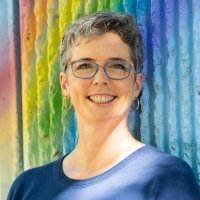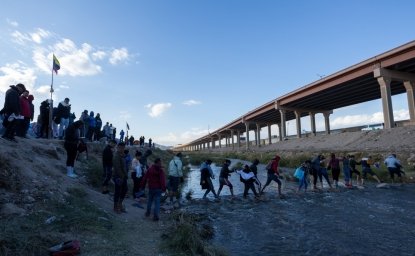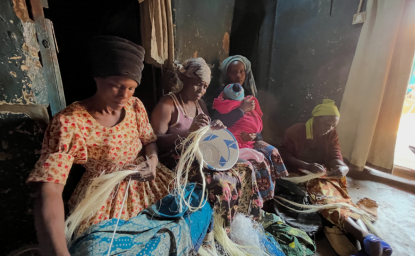Testimony As Prepared
Watch Full Hearing>>>
Canada’s Fast-Track Refugee Plan: Unanswered Questions and Implications for U.S. National Security
Good morning,
I have worked on U.S.-Canada relations for more than 20 years, as a professor, as a policy analyst advising both the U.S. and Canadian governments, and most recently as Director of the Canada Institute at the Wilson Center.
Canada has no greater friend or ally than the United States, and that is a responsibility that Canada takes very seriously. While Canadian policies may differ from those in the United States, attention to shared security and the safety of all citizens in our shared territory is a guiding principle of Canadian policy making.
U.S.-Canada information sharing and security cooperation is unmatched among any other two countries in the world. Within a framework of agreements on security, border and law enforcement, Canadian and U.S. officials communicate directly with each other every single day through well developed institutional and personal relationships.
September 11 was a catalyst for a new security and cooperation paradigm. Canadians recognize that an attack on one is an attack on all. They took post 9/11 security measures very seriously. The 2007 Western Hemisphere Travel Initiative ensures that no one crossed our borders without a passport or equivalent proof of identity.
The principle of perimeter security was institutionalized in the 2011 Beyond the Border initiative, ensuring that travellers and cargo entering Canada or the United States through any port - air, land, marine, or rail -- is subject to the same high level of scrutiny. Information is shared swiftly and seamlessly to relevant security and law enforcement agencies. New technologies in biometrics and data analytics make this level of cooperation possible, and the highest level of commitment from both governments have made it a reality.
It is a myth that 9/11 attackers entered the United States through Canada. In fact, Canadian officials – in cooperation with U.S. counterparts – have been responsible for identifying and stopping potential attacks on the United States before they occur. One well known joint mission is Operation Smooth, which led to the arrest of two men with Al-Qaeda links who were plotting to derail a train running between Toronto and New York in 2013. This mission was the result of successful collaboration between U.S. and Canadian security and law enforcement teams.
Canada’s Syrian refugee policy may differ from that of the U.S. but the level of attention to security is no less vigilant. No refugee can enter Canada before all biometric and biologic data is checked against U.S. criminal, immigration, and security databases. This is an automatic process, not something that officials can decide to do or not do.
According to the State Department, of the 785,000 refugees admitted to the United States only a tiny fraction have been arrested or removed from the United States due to terrorism concerns and none of these were Syrian. If someone wishes to harm the United States or Canada, entering the country as a refugee is a very inefficient way to achieve this, but let’s talk about how Canada safeguards against this possibility.
First, refugees coming to Canada are from low risk groups – families with children, single mothers, LGBT men – all of whom have taken refuge in Jordan, Lebanon, Turkey. Sixty percent are women and 22 percent are children. This is not an ISIS demographic.
Cases are first vetted by the UNHCR and then referred to Canada. Canadian officials determine which of these candidates meets vulnerability criteria and those who do are invited to an admissibility interview. If they satisfy officials during the interview, then applicants are subject to a full health and security screening.
Biometric and biographical data is collected and checked against Canadian and U.S. criminal, immigration, and security databases. As I mentioned above, the decision to check every applicant against U.S. databases is not optional. It is mandatory and automatic . Ralph Goodale, Canada’s Minister of Public Safety and counterpart to the U.S. Secretary of Homeland Security has made clear that if there’s any doubt about an applicant, or any of the data, that application will be put aside.
And, all security and health screening must be completed before anyone boards an airplane.
25,000 is a large number of refugees for Canada but it is consistent with Canada’s response to historic crises.
- Canada accepted more than 250,000 refugees after World War II,
- 37,000 Hungarian refugees after 1956,
- 10,000 Czechs after 1968, and
- More than 50,000 Vietnamese boat people in the late 1980s.
Before it was even an independent country, Canada was a haven for African Americans fleeing from slavery in the United States.
The Prime Minister, the premiers of Canada, and the Governor General are fully onside with the decision to admit 25,000 refugees. There has been a tremendous outpouring of support from business and community groups, especially the faith community – Muslim, Christian, Jewish.
The government has set a target but there will be delays. Resettlement is complex bit the government has committed to ensure that nothing gets overlooked in the process. The Prime Minister has been very clear, “we will meet our target but we will make sure we do it right.”
One of the ways that Canada facilitates integration into communities is through the private sponsorship program. About 10,000 of the 25,000 refugees are expected to be sponsored by community groups. To be admitted to the sponsorship program, groups must meet a number of criteria including agreeing to cover all living expenses for the sponsored family for a year. Moreover, they are responsible for helping to find housing and assist with language, education, and anything the family might need to make a successful transition.
I was involved in the refugee committee at my church in Ottawa, Canada. It was a big commitment. We were on call 24/7 making sure the family had everything they needed from winter boots to babysitting while the Mom took language classes. It was difficult but incredibly worthwhile. We were connected to the family as they put down roots in our town. If you look across communities in Canada, the refugees of the past are the citizens who are today giving back to their neighbors. Refugees who arrived as children are now doctors, teachers, and even Cabinet ministers. Many of them are leading in today’s refugee resettlement efforts.
To return to where I started, Canada is the United States’ closest ally, largest trading partner, and there is no relationship that it takes more seriously. I urge the members of this committee to treat that relationship with equal seriousness. Canada is not a weak link in the fight against terrorism; rather it is a part of a shared security perimeter with the United States of America.
Thank you.





